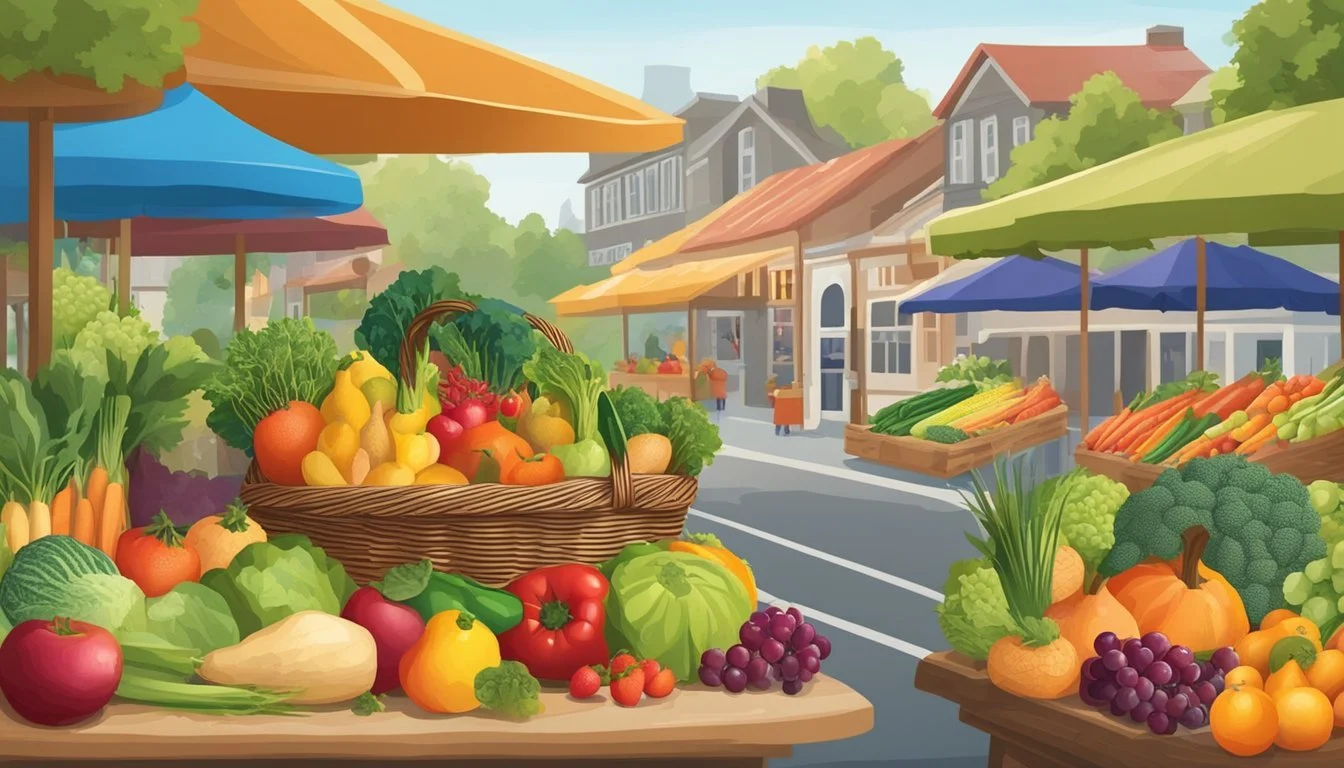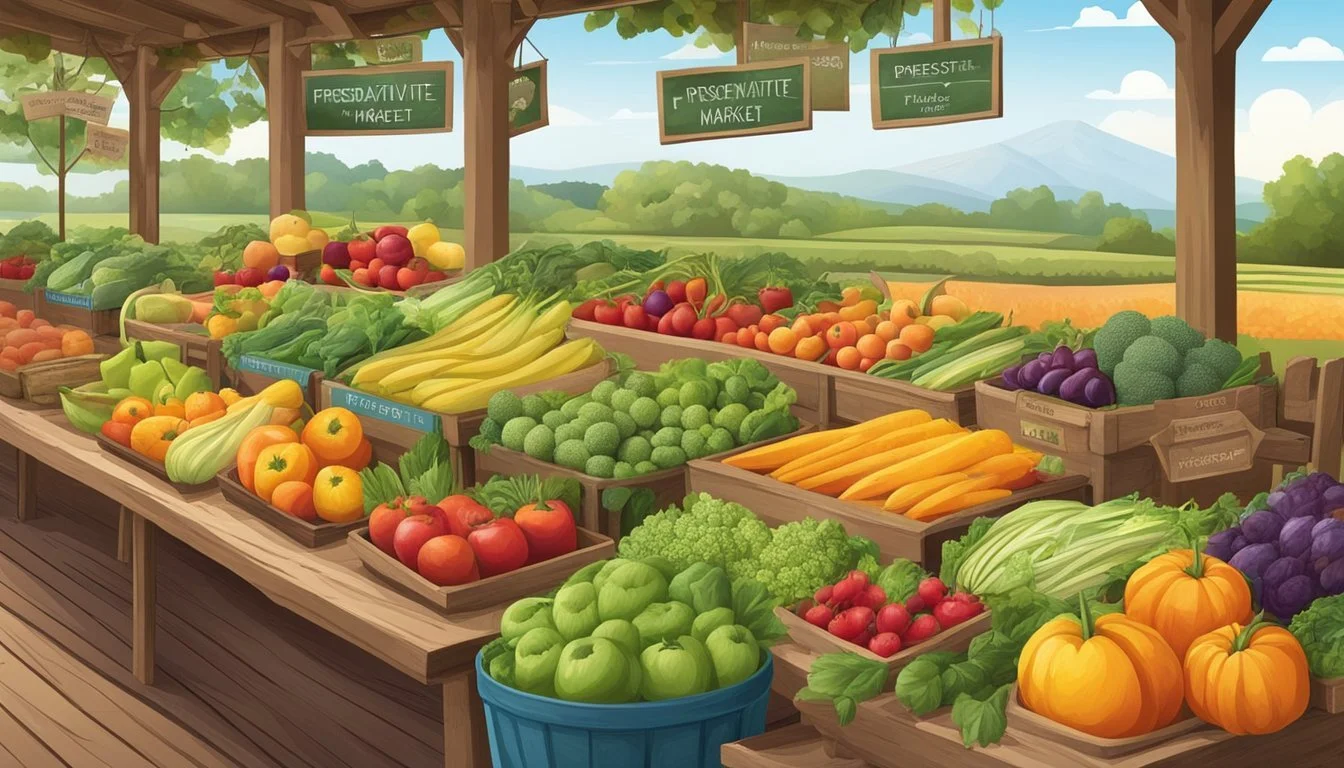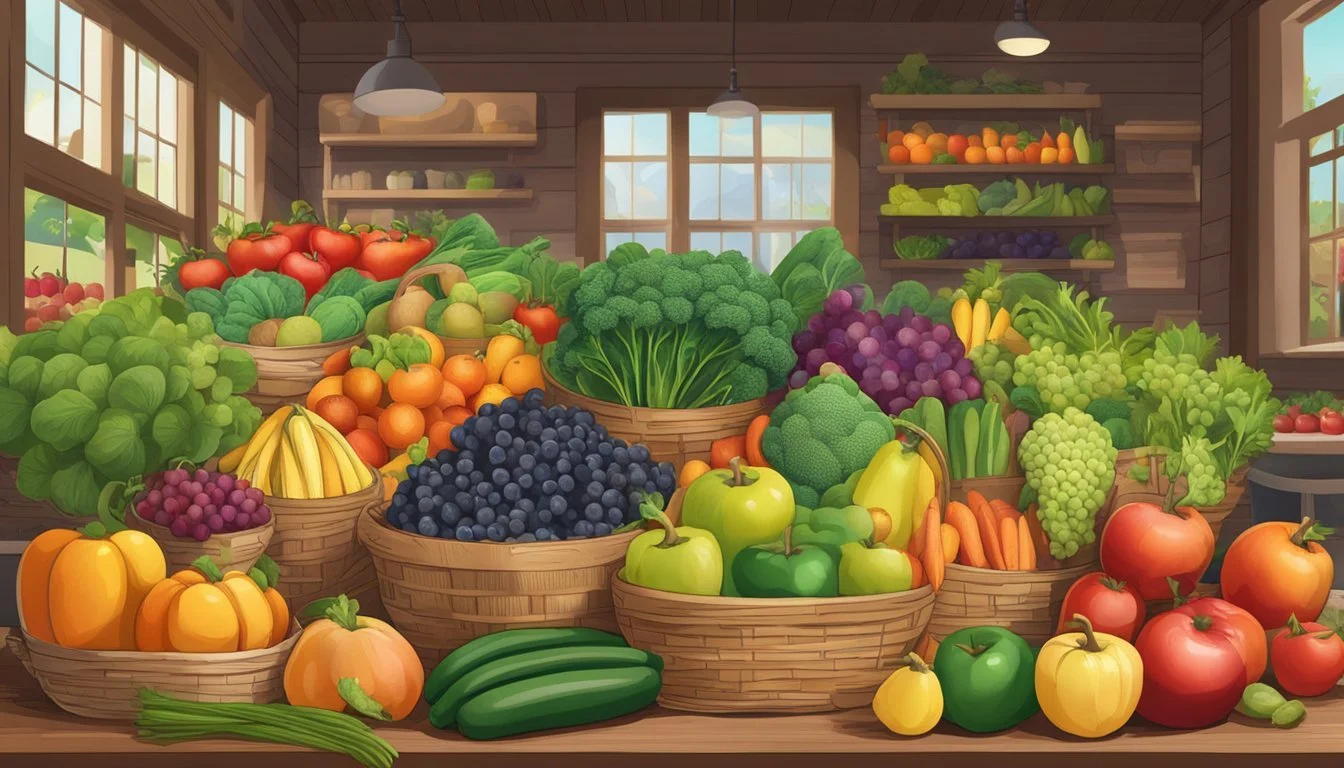A Guide to Preservative-Free Eating with Farmers' Market Finds
Embracing Natural Flavors and Freshness
Navigating the vibrant array of fresh produce and handcrafted goods at a farmers' market can be a transformative step towards a preservative-free diet. Consumers are increasingly seeking whole foods, untainted by artificial additives, to enrich their health and well-being. Farmers' markets serve as a cornerstone for this healthy eating lifestyle, providing access to nutrient-rich fruits and vegetables that are often picked at the peak of ripeness. This ensures maximum flavor and nutritional value, a stark contrast to many store-bought items that may be treated with preservatives to extend shelf life.
Embarking on a preservative-free diet has manifold health benefits. It encourages the consumption of foods in their most natural state, often leading to a greater intake of vitamins and reduced exposure to synthetic substances. Visiting farmers' markets supports this endeavor not only by supplying fresh, minimally processed foods but also by fostering a connection with local food systems. This connection allows for a deeper understanding of where food comes from and the methods used in its production.
In a world where convenience often trumps quality, farmers' market finds are a reminder that food is more than just fuel; it's a link to the earth and community. Adopting a preservative-free diet through these markets can lead to improved health outcomes, with the added benefits of supporting local agriculture and reducing one's carbon footprint through decreased food miles. As a repository of seasonal variety, farmers' markets are an invaluable resource for those looking to enrich their diet and, by extension, their health.
Understanding Preservatives and Their Effects
Preservatives play a key role in extending food shelf life by inhibiting spoilage and oxidation processes. They are essential in maintaining food safety, but continuous consumption, particularly of chemical preservatives, raises concerns about potential health risks.
What Are Preservatives?
Preservatives are substances that are added to food products to prevent spoilage caused by microorganisms such as bacteria, fungi, and yeast, as well as to delay the oxidation process which can lead to food becoming rancid. These substances can be classified into two broad categories:
Chemical Preservatives: These include compounds like sodium benzoate, sorbic acid, and benzoic acid. They are synthesized and used to increase the shelf life of processed foods.
Natural Preservatives: These are derived from natural sources and include ascorbic acid (vitamin C), which acts as an antioxidant, and antimicrobials such as salt and sugar.
Type Examples Common Uses Chemical Sodium benzoate, Sorbic acid Beverages, baked goods, condiments Natural Antioxidant Ascorbic acid Fruits, vegetables, juices Natural Antimicrobial Salt, Sugar Meats, jams, pickles
Health Risks Associated with Preservatives
While the primary intention of preservatives is to protect consumers from foodborne illnesses, some chemical preservatives have been scrutinized for their potential health impacts:
Sodium-based preservatives may contribute to increased blood pressure and other heart-related conditions.
In high quantities, some preservatives like certain nitrates may contribute to cancer risk, especially when foods are exposed to high heat during cooking.
It is important for consumers to be aware of these risks and monitor their intake of processed foods, which often contain higher levels of preservatives.
The Role of Preservatives in Food Safety
Preservatives are crucial in defending against the growth of pathogenic microorganisms, thus playing a vital role in food safety:
Antimicrobial preservatives such as sorbic acid inhibit the growth of molds and yeasts in many dairy and baked products.
Antioxidants help to prevent rancidity in fats and oils, protecting the taste and texture of food while also retaining nutritional value.
By hindering microbial growth and spoilage, preservatives extend the shelf life and safety of food products, allowing them to be transported and stored for longer periods without compromising quality or safety.
Benefits of Preservative-Free Eating
Choosing a diet free of preservatives means selecting foods with high freshness typically found at farmers' markets, which allows one to take advantage of naturally nutrient-rich and organic products.
Improving Health and Well-being
Consumers often report that incorporating preservative-free foods into their diets contributes to improved overall health. They benefit from a reduction in the intake of harmful chemicals that can lead to chronic inflammation, a trigger for various health issues such as asthma and eczema. Moreover, eliminating preservatives can be particularly beneficial for individuals with allergies, as certain preservative compounds are known allergens.
Maximizing Nutritional Intake
Preservative-free eating inherently encourages the consumption of fresh and organic foods, which are less likely to be deprived of their nutrients. These foods often contain higher levels of antioxidants, essential for combating oxidative stress in the body. Not only can this style of eating provide one with a greater abundance of essential vitamins and minerals, but it also supports the notion that organic produce may offer a purer form of nutrition, due to less exposure to synthetic substances typically used in conventional farming.
Finding and Selecting Fresh Food
When visiting a farmers' market, consumers have the opportunity to choose from a variety of fresh and organic foods. Understanding how to navigate the market, identify the freshest produce, and interpret food labels and certifications is crucial for a preservative-free diet.
Navigating the Farmers' Market
The layout of a farmers' market may vary by location, but typically they are organized into sections for produce, artisan goods, and prepared foods. Browsing through the market, shoppers should prioritize the produce section for the freshest fruits and vegetables. Market days and times should be noted, as going early often ensures the best selection. Building a rapport with local farmers can lead to valuable insights about the offerings and possibly lead to discovering the best picks of the day.
Identifying Fresh and Organic Produce
Choosing fresh produce involves assessing its appearance and texture. Look for vibrant colors and firmness in fruits and vegetables, which generally indicate freshness. To determine if produce is organic, look for items labeled as such and don't hesitate to ask the farmer about their farming practices. Organic foods should be certified and thus free of synthetic pesticides and fertilizers.
Key Indicators of Freshness Description Color Vivid, natural colors suggest ripeness and freshness. Texture Fresh produce typically has a firm texture without bruises or soft spots.
Understanding Food Labels and Certifications
Interpreting labels and certifications at a farmers' market can help ensure that the food meets specific standards. Certified organic labels indicate that the food has been grown according to government standards for organic farming, which include limited use of synthetic pesticides and fertilizers. Other certifications may highlight local, non-GMO, or other specialty farming practices. Shoppers looking for the freshest and most natural options should seek out these certifications to guide their selections.
Common Certifications Meaning USDA Organic Complies with federal guidelines for organic farming. Non-GMO Project Verified Verifies that the product does not contain genetically modified organisms.
The labels serve as a consumer's assurance that the produce they are purchasing is fresh and grown with limited or no synthetic substances.
Preservation Techniques for Fresh Food
When embracing a preservative-free lifestyle, one can extend the life of farmers' market produce through natural preservation methods and efficient storage practices. These approaches can ensure food retains its nutritional value and flavor while avoiding unnecessary waste.
Natural Alternatives to Chemical Preservatives
The use of natural preservatives such as salt, vinegar, and sugar is a time-honored tradition that can keep food safe and extend its shelf life without the need for synthetic additives. Salt is effective in drawing out moisture, which helps prevent the growth of bacteria in items like meats and vegetables. Vinegar, through its acidic properties, can pickle various foods from cucumbers to carrots. Similarly, sugar can be used to make preserves and jams, creating an environment that inhibits microbial growth. These substances are often more desirable as they are recognizable and have additional culinary benefits.
Examples of natural preservatives and food products:
Salt: Meats, fish, and vegetables
Vinegar: Pickles, relishes, and chutneys
Sugar: Jams, jellies, and fruit preserves
Proper Food Storage and Handling
For maximum freshness, the way one stores and handles food is crucial. The key is to maintain the integrity of the products without resorting to chemical preservatives. Keeping food at the correct temperature is essential; for instance, refrigeration can slow down the enzymatic degradation of fruits and vegetables. The use of airtight containers or vacuum-sealed packaging can prevent oxidation and moisture loss, further preserving the quality of produce. Regular rotation of items in storage ensures that the oldest products are used first, thereby minimizing food waste.
Recommended food storage practices:
Keep perishables at proper temperatures (e.g., refrigerator or cooler)
Utilize airtight containers or vacuum-sealed bags for freshness
Label and date items to track and use the oldest products first
Incorporating Farmers' Market Finds into Your Diet
Farmers' markets offer an abundance of fresh produce and often provide the building blocks for a preservative-free diet. Utilizing these resources can lead to healthier meal choices and a greater emphasis on whole foods.
Planning Preservative-Free Meals
When planning meals centered around farmers' market purchases, individuals should focus on a variety of fruits and vegetables. Starting with seasonal offerings can inspire the week's menu, while incorporating meat and eggs sourced from local farmers ensures the diet is balanced and free from unnecessary additives.
Fruit: Build breakfasts and snacks around seasonal fruits; they are perfect for smoothies or as natural sweeteners in oatmeal.
Vegetables: Base lunches and dinners on the vegetables available, creating salads or stir-fries that highlight their fresh taste.
Meat: Opt for cuts of meat from vendors who raise their animals on a natural diet without hormones.
Eggs: Incorporate farm-fresh eggs into breakfast dishes or use them as a protein-rich ingredient in other meals.
Potatoes and other starches: Use them as hearty sides or integrate into main dishes.
Individuals aiming to reduce or eliminate preservatives can also benefit from connecting with vendors to learn more about their growing and production practices.
Preparation and Cooking Tips
The preparations for a preservative-free diet start with proper washing and prep of fruits and vegetables. Here's a quick guide:
Wash: Thoroughly clean all produce to remove any residues.
Prep: Cut, slice, or chop ingredients soon after purchasing to save time on busy weeknights.
Cook: Utilize cooking methods like grilling or steaming to maintain the natural flavors and nutrients of the ingredients.
As individuals integrate farmers' market finds into their diet, they should utilize these methods:
Batch Cooking: Prepare large quantities of base ingredients like grains or proteins to mix and match with fresh produce for quick, healthy meals.
Storage Techniques: To maximize the shelf life of market finds, store them correctly—cool and dry for pantry items, refrigerated for freshness-sensitive produce.
Adopting these strategies enables one to create a diverse array of preservative-free meals that celebrate the freshest ingredients while adhering to a health-conscious diet.
Organic Farming and Sustainable Agriculture
Organic farming plays a critical role in sustainable agriculture by promoting environmental health and producing high-quality food. It emphasizes the use of natural processes and materials, which has a direct impact on food quality and crop production strategies.
The Impact of Organic Farming on Food Quality
Organic agriculture restricts the use of synthetic pesticides, antibiotics, herbicides, and growth hormones, which are often present in conventional farming practices. This approach reduces the amount of chemical residues found in food, resulting in products that many consumers perceive to be healthier. By prioritizing soil health and fostering a diverse ecosystem beneficial to microorganisms, organic farming can lead to crops that are more nutrient-dense when compared to those produced using conventional methods.
Strategies for Sustainable Crop Production
To maintain the health of the agricultural system, organic farming employs several strategies:
Crop Rotation: This practice is essential in disrupting the lifecycle of pests and reducing soil erosion, thereby decreasing the need for chemical pesticides and fertilizers.
Use of Beneficial Animals and Insects: Encouraging the presence of organisms that naturally control pest populations helps minimize damage to crops without the use of synthetic chemicals.
Enhancement of Soil Fertility: Organic matter, such as compost, is used to enrich the soil, which promotes better water retention and nurtures a vibrant, healthy soil biome.
These farming practices are instrumental in creating a sustainable environment that supports long-term agricultural productivity.
Decoding the Impact of Preservatives on the Environment
The use of food preservatives not only extends the shelf life of products but also has a distinct impact on the environment. This includes the potential for chemicals involved in preservation to cause soil and water contamination.
Chemicals, Soil, and Water Contamination
Food preservatives, particularly synthetic chemicals, may enter ecosystems through agricultural run-off, impacting the soil and potentially leading to water contamination. When preservatives are used in food production, they can accumulate in the environment over time, harming wildlife and disrupting natural processes. For instance:
Chemicals: Certain additives may contain compounds that do not break down easily, leading to persistent environmental pollutants.
Soil: Contaminants can adversely affect soil health, altering microorganism balances crucial for nutrient cycling.
Water: Runoff from treated agricultural fields can carry chemicals to local waterways, impacting aquatic life and potentially entering the human water supply.
Reducing Environmental Footprint with Organic Choices
Opting for organic foods can minimize the use of synthetic preservatives, thereby reducing one's ecological footprint. Here’s how organic choices make a difference:
Organic foods: They tend to be grown without synthetic pesticides or preservatives and therefore are less likely to contribute to soil and water contamination.
Environmental impact: By choosing organic, consumers support practices that are designed to maintain environmental integrity and preserve ecological balance.
Educating Consumers and Advocacy for Food Safety
In the journey toward preservative-free eating, food safety and proper labelling are indispensable allies for consumers. Education on these topics empowers them to make informed choices that align with healthful eating practices.
Role of Consumer Awareness in Promoting Healthful Eating
Consumer awareness is crucial to adopting healthier eating habits. The more they understand about food safety and preservation, the more likely they are to choose fresh, unprocessed foods from farmers' markets. Research shows that informed consumers often seek out foods they can trust to be safe and healthful. When consumers frequent farmers' markets, they invest in produce that supports not only their own health but also the local agricultural community. At the same time, public education campaigns by entities like the FDA play a substantial role in disseminating information about safe food handling and the potential risks associated with preservatives.
Advocating for Clearer Food Labelling and Standards
Clear food labelling and stringent food standards are vital for consumer protection and education. They demand transparency and facilitate safer food choices. Advocacy efforts have been instrumental in pushing for a more comprehensive labelling system, which includes information about the presence or absence of preservatives. The FDA's involvement in creating and enforcing these labelling standards ensures that consumers can trust the accuracy of labels when making purchases. This push for transparency is not just about avoiding foodborne illness but also about encouraging a shift towards more natural and less processed food options.
Navigating Regulatory Standards and Certifications
When opting for a preservative-free diet using farmers' market finds, understanding the U.S. Food and Drug Administration (FDA) guidelines on preservative use and the relevance of organic and non-GMO (genetically modified organisms) certifications is of utmost importance.
Understanding FDA Guidelines for Preservative Use
The FDA plays a pivotal role in protecting public health by ensuring the safety and proper labeling of food products in the United States. Regulations require that food labels are truthful and not misleading, stipulating that any use of preservatives must be explicitly stated. Preservative-free foods, therefore, must not contain substances that are intended to prevent or delay spoilage caused by chemical changes, microbial growth, or other conditions.
Key aspects of FDA regulations on preservatives:
Clear ingredient disclosure on food labels
Defined usage levels for various preservatives
Certification of safety for intended use
Consumers should familiarize themselves with FDA guidelines to ensure that their farmers' market selections are genuinely free of preservatives. Careful examination of labels, especially when venturing outside the bounds of unprocessed fruits and vegetables, is necessary.
The Significance of Organic and Non-GMO Certifications
Certifications such as organic and non-GMO provide additional assurance for consumers who are vigilant about avoiding preservatives. The organic certification, overseen by the USDA's National Organic Program, requires that food products are produced without synthetic preservatives, pesticides, or fertilizers. Similarly, non-GMO certification ensures products are not genetically engineered or altered.
Importance of these certifications:
Organic certification ensures food is produced following strict guidelines, which exclude most synthetic preservatives.
Non-GMO certification offers transparency to consumers who seek to avoid genetically modified foods, which can sometimes include preservatives.
When navigating the food industry for preservative-free options, these certifications serve as credible, regulated signals that a product aligns with a consumer's dietary standards. It is important for consumers to recognize and understand the labels and certifications that indicate a product is preservative-free for well-informed food choices.








